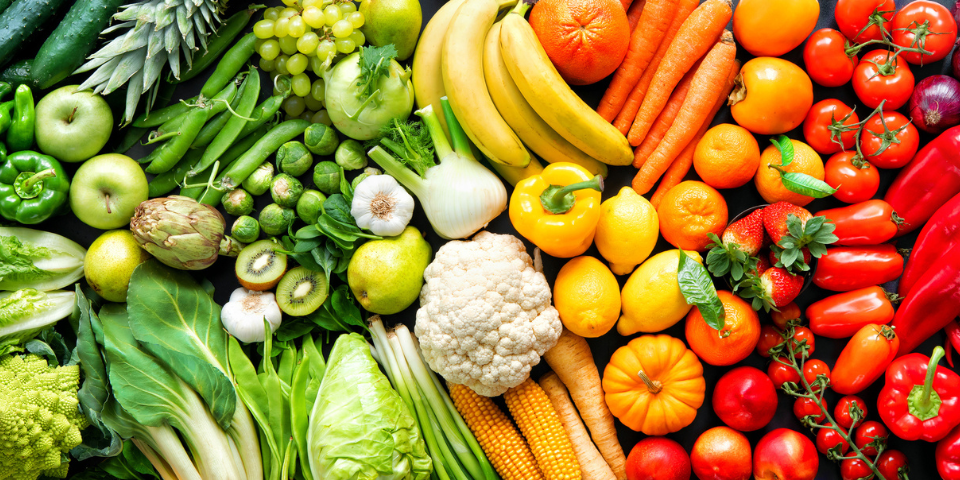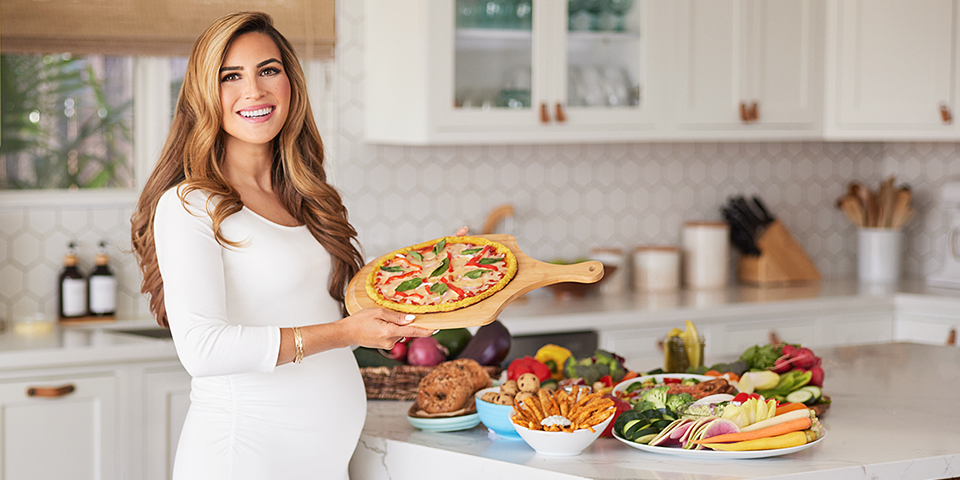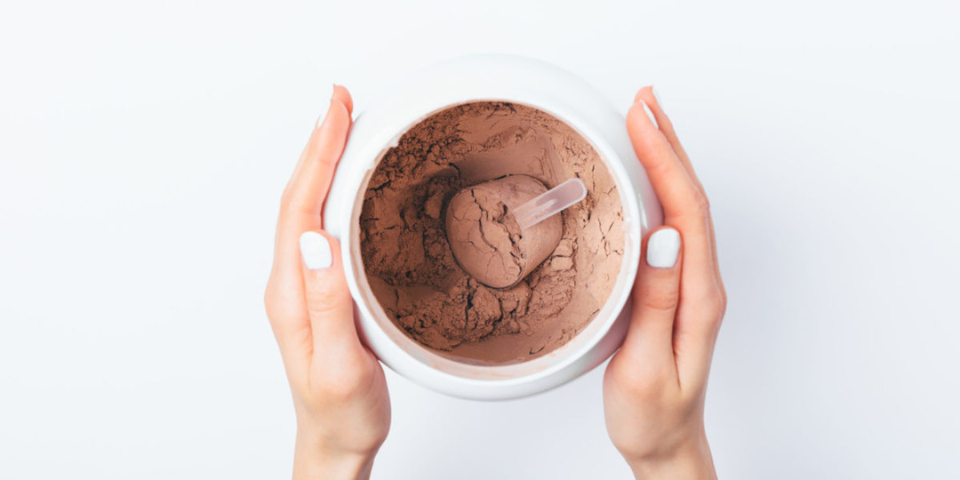Diet trends come and go, but one golden rule has remained the same: Eating a variety of vegetables is important to maintain good overall health. But learning how to eat more vegetables usually requires a little more subtlety than shoveling handfuls into your mouth every day.
According to the CDC, only 9 percent of American adults are consuming the recommended daily amount of two to three cups of vegetables per day. So even if people know the rule, it doesn’t mean they follow it.
Why is it so important to get your daily does of vegetables, anyway? One reason is that they’re just straight up good for your body.
“Veggies are loaded with so many valuable nutrients like fiber, vitamins, minerals, and phytonutrients that have shown time and time again to promote health,” says Krista Maguire, RD, CSSD, and senior nutrition manager for BODi.
Not only that, they can also help with healthy weight management. “Vegetables add volume and fiber to meals, helping you feel full,” says Dan Fenyvesi, M.S., R.D., and author of Food Sobriety. And although all of that sounds like a good enough reason to eat your vegetables, sometimes it’s tough to make this food group a priority.
If you’re struggling to figure out how to eat more vegetables and hit that recommended daily amount, here’s a list of creative, fun, and yummy ways to pack those nutrient gold stars into your daily meals. Bon appétit!
1. Add New Flavors to Your Vegetables
If you’re struggling in the vegetable department, the first thing you should look at is how you’re preparing them. Hate the taste of raw broccoli? Then don’t eat raw broccoli!
With the right marinade, spices, and preparation method, veggies can be transformed into something way beyond their original form.
One of Fenyvesi’s favorite ways to prepare vegetables is to marinate them in salad dressing and roast them in the oven at 450°. Sprinkle on a little extra herbs and spices, and it’s a simple, tasty way to enjoy your greens.
(If you go the salad dressing route, check the label to make sure it doesn’t have any added sugar or preservatives.)
2. Break Them Out for Breakfast
Load up a fluffy egg omelet with your favorites, like broccoli, spinach, and mushrooms, for a quick and easy dose of vegetables in the morning.
Broccoli works as a filling bulk, and spinach and mushrooms cook down to a smaller volume, allowing you to pack in a good portion without overpowering the omelet.
Prefer a sweet breakfast? Pack some pumpkin puree into pancakes! High-protein pumpkin pancakes are loaded with a whole cup of the orange stuff, which provides potassium, vitamin C, vitamin A, and iron.
Fall or not, these are a great way to start your day.
3. Load Up Your Pasta Sauce
Tomato sauce in its purest form — meaning mostly tomatoes and minimal added sugar and preservatives — can be a healthy base for pastas.
If you want to take it up another level, add in some diced zucchini, asparagus, broccoli, onions, mushrooms, garlic, bell peppers, and spinach for an incredible take on pasta primavera.
Even picky eaters can enjoy this hearty pasta base. For a little heat, add some red chili flakes for a little “arrabbiata” vibe, and you’ve got yourself one deliciously healthy Italian sauce.
4. Opt for Cauliflower Pizza Crust
Cauliflower is really having a moment. And lucky for us, that has led way to a lower-calorie, nutrient-filled pizza base.
It’s pretty easy to make your own cauliflower crust — throw some florets into a food processor and mix it with eggs and spices — or you can pick some up from the store.
But just pay attention to the ingredient list for the store-bought options: Not all cauliflower crust pizza is lower in calories and carbs, so be sure to read the label.
Maguire says you can also opt for a broccoli crust if you prefer, or mix them both for a cauli-broc mash-up!
It’s the perfect springboard for layering on your veggie tomato sauce (see above), roasted broccoli, tomato, spinach, garlic, mushrooms, and cheese for one big, happy, vegetable pizza garden.
5. Cook Up Cauliflower Fried Rice
The best part of this cauliflower boom? Pretty much every grocery store now carries pre-“riced” cauliflower, which is an excellent base for veggie fried rice.
We love cauliflower fried rice that’s loaded with green peas, carrots, and other flavorful additions. It can also include chicken for some protein!
It’s very simple to make cauliflower rice yourself; all you need is a food processor to finely mince your cauli florets. You can also find it in many grocery stores if you don’t have a food processor.
And you can do the same thing with broccoli if you prefer the green stuff.
6. Add Diced Vegetables in Burger Meat
Want a veggie burger, but still craving some meat? Fenyvesi says dicing up onions, parsnips, and carrots and incorporating them into ground beef has been a huge hit with his clients, and its’ a creative way to diversify your burger game.
Layer on lettuce, tomato, sprouts, and fresh onions, and you’ve got a vegetable-packed burger that’ll still satisfy your inner carnivore.
7. Whip Up Some Veggie Tacos
“In terms of So-Cal/Mexican-style cuisine, I absolutely love street tacos loaded with diced onion, cilantro, and radish,” Fenyvesi says. Tacos are a super easy and versatile vehicle to incorporate any of your favorite vegetables.
Try adding sweet potatoes with black beans, avocado, scallions, and cheese for a heartier take. And to really trick your tastebuds, you can cook jackfruit in a way that makes it taste exactly like pulled pork.
8. Blend Vegetables into Smoothie Bowls
Smoothie bowls are a yummy (and sneaky) way to add some more vegetables into your day — not to mention they’re super Instagrammable!
You can really make this veggie-hack customizable to your preferences, since it’s pretty easy to use fruits and nut butters to mask the flavor of vegetables like kale and spinach.
And if you prefer a good old fashioned smoothie without the bowl, give these superfood smoothie recipes a try.
Just be wary of store-bought or pre-made smoothie options if you go that route, as they can often be loaded with sugar and other unnecessary ingredients that aren’t super healthy for you.
9. Rethink Your Favorite Snacks
You’ve probably heard of sweet potato fries, but have you ever considered zucchini fries? Breading and baking some sliced zucchini is a delicious new take on a classic fast food snack.
Here’s a simple zucchini fry recipe that takes less than 30 minutes to make, and it only has 74 calories per serving. You only need four ingredients and some seasoning, and then you can enjoy a healthy side dish to your (vegetable-packed) burgers for dinner.
Another veggie remake of a classic childhood snack is these broccoli tots. Start with riced broccoli as a base, and then mix in some eggs, cheese, and other seasonings.
They’re a perfect savory treat for when you want to relive your younger years in a healthier way. Plus, they can be a hit with kids who could also use some more vegetables during snack time.
10. Spiralize Your Vegetables
It’s a hard task replacing pasta, but zoodles have become a favorite among veggie-lovers. Using a spiralizer, set your desired thickness and spiralize your zucchini squash into long noodles, or “zoodles,” if you will.
Try them in this garlic shrimp recipe, or make a creamy roasted red pepper sauce for the veggie noodles.
Not that into zucchinis? You can also use butternut squash, beets, carrots, and even sweet potatoes to make these faux-noodles, Maguire says.
And if you really want to get fancy, combine multiple veggie noodles for a super colorful, nutrient-dense dish. Add some pesto or tomato sauce, and you’ll love this vegetable-forward, lower-calorie bowl of goodness.








